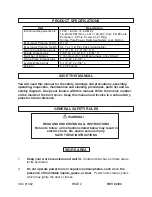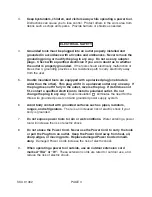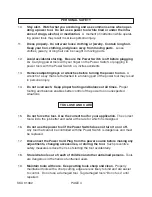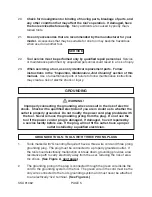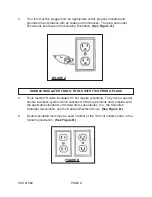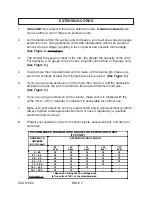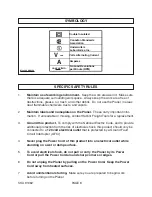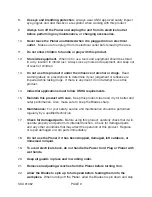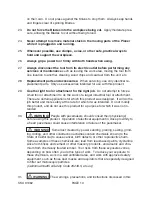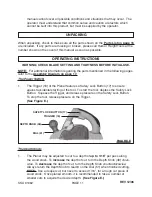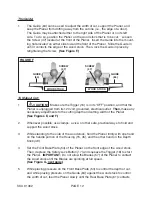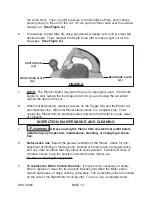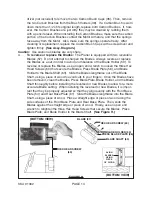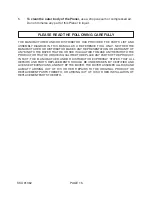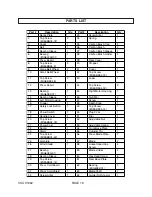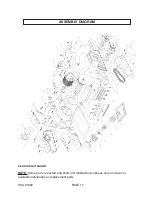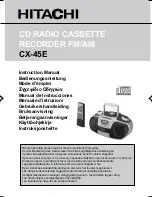
20.
Check for misalignment or binding of moving parts, breakage of parts, and
any other condition that may affect the tool’s operation. If damaged, have
the tool serviced before using.
Many accidents are caused by poorly main-
tained tools.
21.
Use only accessories that are recommended by the manufacturer for your
model.
Accessories that may be suitable for one tool may become hazardous
when used on another tool.
SERVICE
22.
Tool service must be performed only by qualified repair personnel.
Service
or maintenance performed by unqualified personnel could result in a risk of injury.
23.
When servicing a tool, use only identical replacement parts. Follow
instructions in the
“Inspection, Maintenance, And Cleaning” section of this
manual.
Use of unauthorized parts or failure to follow maintenance instructions
may create a risk of electric shock or injury.
GROUNDING
SKU 91062
PAGE 5
WARNING!
Improperly connecting the grounding wire can result in the risk of electric
shock. Check with a qualfified electrician if you are in doubt as to whether the
outlet is properly grounded. Do not modify the power cord plug provided with
the tool. Never remove the grounding prong from the plug. Do not use the
tool if the power cord or plug is damaged. If damaged, have it repaired by
a service facility before use. If the plug will not fit the outlet, have a proper
outlet installed by a qualified electrician.
GROUNDED TOOLS: TOOLS WITH THREE PRONG PLUGS
1.
Tools marked with “Grounding Required” have a three wire cord and three prong
grounding plug. The plug must be connected to a properly grounded outlet. If
the tool should electrically malfunction or break down, grounding provides a low
resistance path to carry electricity away from the user, reducing the risk of elec-
tric shock.
(See Figure A, next page.)
2.
The grounding prong in the plug is connected through the green wire inside the
cord to the grounding system in the tool. The green wire in the cord must be the
only wire connected to the tool’s grounding system and must never be attached
to an electrically “live” terminal.
(See Figure A.)


